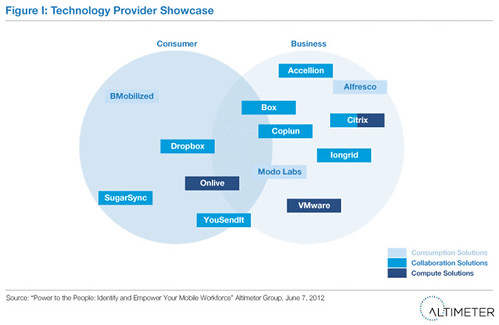The term “mobile” is an amorphous term that can be applied to nearly every digital and technology strategy. So where should companies start? This report outlines a pragmatic approach based on: 1) Conducting a mobility audit 2) Examining Roles 3) Then choosing technology and partners choices.
It’s important you understand that one size doesn’t fit all needs; know that a different strategy is needed for each persona needs –don’t choose technology partners first, then force it into the org. While this seems common sense for most, many are not approaching with this needs based approach first.
Altimeter’s latest research report on how corporations should systematically develop a mobile strategy for their workforce is now published by Analyst Chris Silva. As the editor of this report, it was exciting to see from Chris and Jessica Groopman (researcher) how there were clear use cases surfacing, but also learning how corporations struggle on where to start.

Above: Understand the roles of each worker persona require different mobile strategies

Above: Once you’ve gone through steps 1 and 2 to first do internal research, you can choose from some of these potential technology providers.
Related Resources
Myself and a coworker wrote a business case on this earlier this year and I was quite amazed how much money we would save by moving only 400 associates to this program (roughly 1/5 our corporate workforce in the Bay Area). I have been mobile and without the need for a desk for several months now but I am in the office pretty much every day. My computer set-up is different than the standard build that is normally provided which was development in partnership with our IT team. This was also a very large change for our People and Facility teams.
I definitely agree with you on
this. The first step to take is really
to understand the needs of each role in the organization, and then choose the
right technology. That should be the natural
flow of things. And not buy technology
and make your people adapt. Doing that
can actually make it harder for the whole organization to adjust to technology.
Â
I think it’s an important thing to us is mobile.Otherwise, we would have been interrupted in many mobile.Because of IT, we can easily .communicate with each other.Many platforms and technologies are updated.